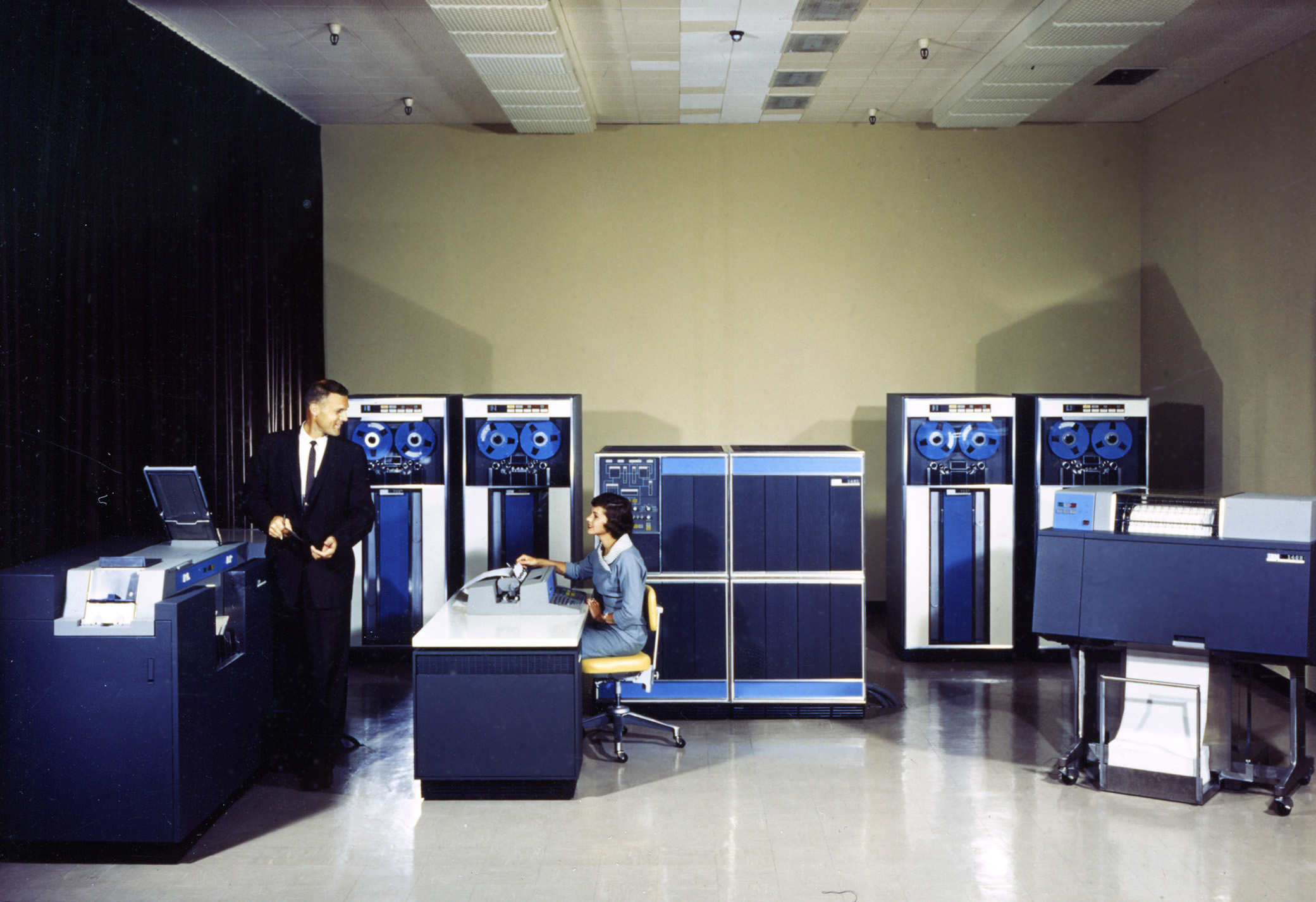If there was one computer of the 1960s that changed the way we compute, it would be the IBM System/360.
The IBM System/360 line of computers were originally released in 1964, although the history of IBM mainframes stretches back into the late 1940s. The System/360 wasn’t only groundbreaking for IBM, but the entire industry. And its effects are still felt today.
It is also probably an icon of computing in the era. Even today with modern mainframes, the word “mainframe” is synonymous with the name “IBM.”
Many Issues

Computing was, as you can imagine, extremely different in the late 1950s. Most computers utilized vacuum tubes and were unreliable. They required lots of cooling, although later transistorized computers required less cooling than their vacuum tube forerunners. The machines also were expensive, requiring you to upgrade when the machine didn’t meet your needs.
However, upgrading machines wasn’t bad enough.
Software written for these computers were tailored specifically for the specific computer it was being ran on. There was no “universal” instruction set, although programming languages like COBOL, RPG, and FORTRAN were starting to become popular.
This was a huge issue, as anytime a company upgraded a computer it was filled with pages of expensive tasks. Replacing the computer hardware itself was expensive, and retraining users on using the new equipment was time consuming and expensive. But having to re-write programs and update records were another part of the problem.
That’s why engineers at IBM had an ingenious solution. Why not just create a unified instruction set, so that when someone does upgrade their system – they won’t have to retrain people, re-write programs, and update records.
A Start of a Legacy
Thomas J. Watson Junior, the son of IBM founder Thomas J. Watson and then-chairman of IBM, had bet the entire company on developing System/360. While a huge and risky gamble, IBM had plenty of talented employees to design the System/360 architecture.
Gene Amdahl was the chief architect of the System/360 project, which was being managed by Fred Brooks. The release was orchestrated by John R. Opel, who would go on to be a later CEO of IBM during the 1980s.
After years of hard work, the gamble paid off. The System/360 had been purchased by companies like Ford Motor Company, McDonnell Aircraft, the federal and state governments, banks, and many others.

Fun Fact: Ford was a customer of the IBM System/360, but the IBM/Ford connection goes deeper. The IBM System/360 and the Ford Mustang were both released in the same month only ten days apart – April 1964.
Why?
The System/360 was not only the first computer to use a unified instruction set so that programs didn’t need to be re-written for upgraded systems, but it had many other features.
Since System/360 was a line of different “sizes” of computers that varied in physical size, power/cooling requirements, and performance, it was very popular with businesses, governments, educational institutions, and other institutions. It was very popular during its time period.
Furthermore, it was backward compatible with programs written for some older IBM mainframes, like the IBM 1401.
A Legacy that Continues…
In the 1960s and 1970s, IBM’s System/360 was subject to clones being manufactured by other companies that could emulate the operation of a real System/360. In other words, they could run the same programs, etc. Some companies, like Memorex, got their start producing System/360 clone hardware, like magnetic disk drives. (Sounds a lot like the IBM PC clones of the 1980s.) Even Gene Amdahl, who originally served as the system architect for the System/360, formed is own company producing IBM clones.

In 1970, IBM introduced the System/370. The S/370 was an updated version of the S/360 which maintained backwards compatibility but increased performance. The System/370 was eventually replaced with the System/390 in… you guessed it… 1990.
Today, IBM still manufactures mainframe computers that are backwards compatible with the same programs in System/360. This includes the z-Series of mainframes that continue to be produced by IBM. So, you could (in theory) run the same program you compiled in 1964 for your System/360 on a z-Series IBM mainframe in 2017.

Furthermore, you could even run older programs written for the IBM 1401 – released in 1959 – on the z-Series, since the System/360 was backwards compatible with the 1401. How interesting would it be to run a program written in 1959 for an IBM 1401 on a 2017 IBM z-series computer?
In fact, in one of my next posts, I will discuss more about IBM mainframes as a whole – and not just the System/3×0 family. The 1400 series, 1130, System/3x series, etc.
Fun Fact: The System/360 is also a TV star! Recently, the System/360 has been featured on the AMC hit Mad Men, although this isn’t the first (nor last) appearance of a System/360 or IBM mainframe in the motion picture industry!
